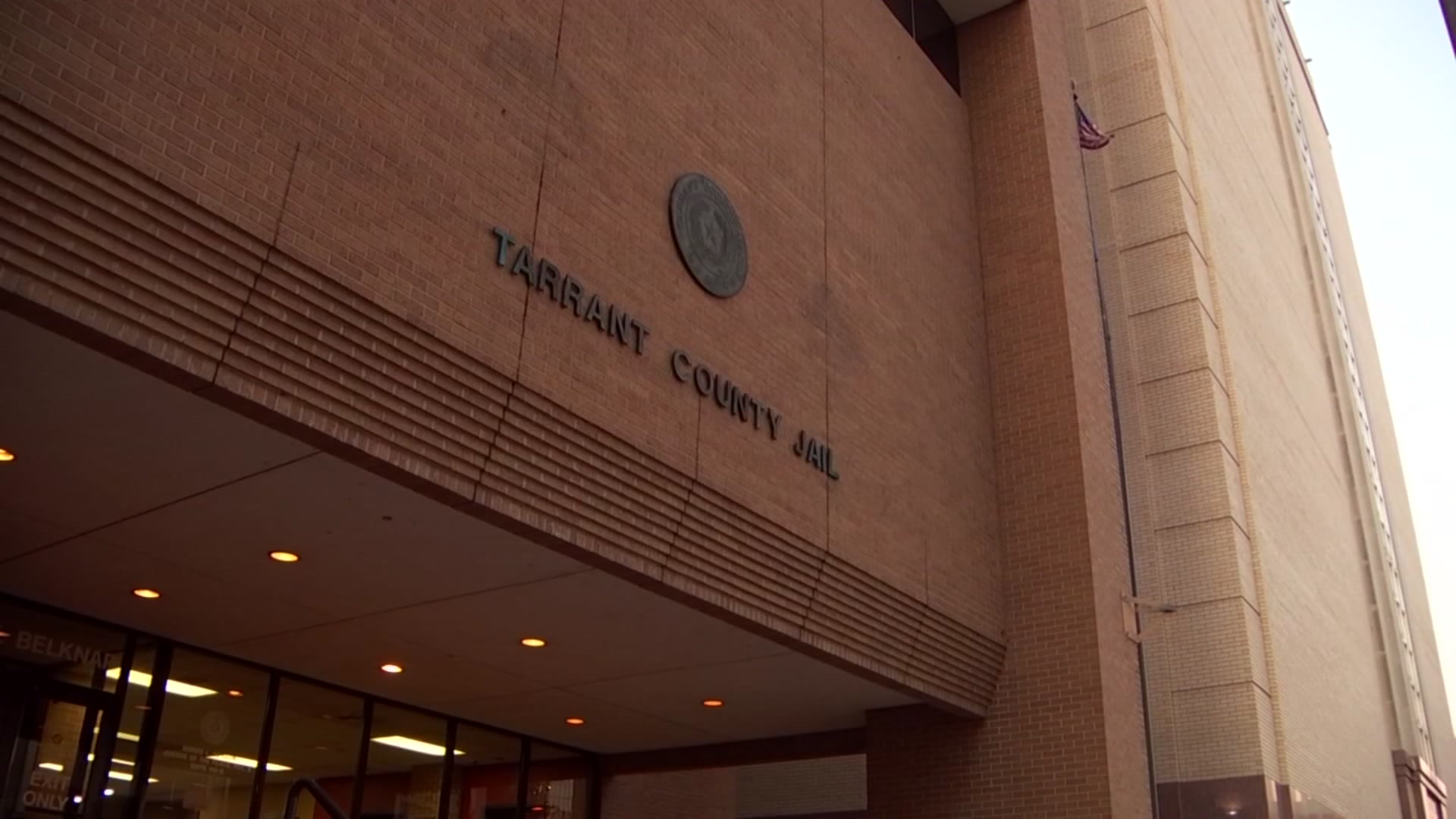Gabrielle Scott grew up in a Missouri City neighborhood with modest-sized homes, lofty oak trees and manicured lawns.
The Houston Chronicle reports her street is filled with people from different backgrounds, old and young, and the neighbors are friendly. Gabrielle, who is 16, has fond memories of her childhood.
There has only ever been one problem.
She lives on a street named after the first leader of the Ku Klux Klan.
"It's kind of amazing you live on a street that was founded by your enemy," said Gabrielle, who is African-American.
She said she, her mother and her grandmother often think about and discuss Bedford Forrest Drive. Each has found a way of dealing with it.
Gabrielle sees it as a blessing. "It kind of shows (people) who are against us that anyone can do anything."
Local
The latest news from around North Texas.
Missouri City's Bedford Forrest isn't the only nod to the past in Texas. Dozens of streets in Houston pay homage to the Confederacy or the Civil War. Hundreds of schools, buildings and statues across the country also honor that history. But many of those monuments and memorials became forever tainted two summers ago, after Dylann Roof opened fire at an African-American church in Charleston, South Carolina, killing nine people. Roof wrapped his white supremacist ideals in the Confederate flag.
That flag was removed from South Carolina's statehouse grounds shortly after the shooting, and an urgent push began to take other symbols down across the country.
New Orleans removed a statue of Robert E. Lee, the final of four Confederate-inspired monuments, in May.
"These statues are not just stone and metal. They are not just innocent remembrances of a benign history," Mayor Mitch Landrieu said in a rousing speech. "These monuments purposefully celebrate a fictional, sanitized Confederacy; ignoring the death, ignoring the enslavement and the terror that it actually stood for."
In Houston, the fourth-largest and most diverse city in the nation, the public school district decided last year to rename eight schools with Confederate ties, at a cost of $1.2 million.
Earlier this year, Houston City Council members changed the name of Dowling Street, named after Confederate officer Richard "Dick" Dowling, to Emancipation Avenue.
In June, passionate protesters showed up at the statue of Sam Houston in Hermann Park after news reports swirled about a group coming to advocate for its removal. No such proposal had been made, but protesters felt a line had to be drawn.
"Erasing history for the sake of political correctness or to make somebody feel better, it's not just stupid, but it's dangerous," said David Amad, an organizer of the demonstration at Hermann Park.
Yet the momentum has been largely one-sided around the country.
Gerald Horne, John J. and Rebecca Moores chair of history and African-American Studies at the University of Houston, doesn't think men on the wrong side of history deserve a platform.
"Why should traitors be honored?" Horne said. "It really makes no sense, and it really needs to stop."
Gwendolyn Scott, Gabrielle's grandmother, went looking for a new home in 1989.
Her husband, Wilford, was set to work for Dow Chemical in Freeport, but Scott wanted to live closer to Houston, for a better chance at getting a job.
Missouri City was an easy compromise.
Finding a neighborhood to build a house in was the tricky part.
Scott, now 67, remembers briefly considering Sienna Plantation, but she bristled at the name and the history -- it was originally a sugar and cotton plantation.
She and her husband then explored a neighborhood close by, a subdivision called Vicksburg Village of Shiloh.
There was no escaping the echoes of the Civil War, with streets named for battles and leaders, like Confederate Court and Cumberland Drive.
Scott found a place to live on Bedford Forrest.
A former teacher and librarian, she pressed the salesman from Perry Homes about the origin of the street name.
"Do you know who Bedford Forrest was?" she asked the young white man.
"Was he a general?" he asked.
Scott explained that Nathan Bedford Forrest was the original grand wizard of the KKK. She told him about his leadership during the battle of Fort Pillow in Tennessee, where African-American soldiers were slaughtered.
The salesperson did not know anything about the general, Scott said, and he didn't seem to care.
A manager eventually explained to Scott that the name "doesn't mean anything now."
Scott reasoned with herself about the neighborhood. It was a nice cul-de-sac for her middle school-age son and daughter to grow up on.
But the name bothered her.
As they moved into the home in March 1990, Scott thought about complaining to the City Council.
"I wanted to make trouble about the name, but then I didn't want to, because I didn't think it would do any good," she said.
Instead, she decided she would educate her neighbors.
"It started not to bother me, you know?" Scott explained. And in a way, she started to feel empowered, as if her presence on that street was a statement against racism.
One neighbor gave her a biography of Forrest that she said tried to paint a rosier picture of him.
Similarly, John Wyeth in "Lieu of Lieutenant" describes how Forrest, a wealthy Tennessee plantation owner, was kind to his slaves, clothing them and trying his best to not separate families.
Historians also say Forrest distanced himself from the KKK in later years. Others argue that he wasn't the first grand wizard.
But to Scott, no book or atonement was going to make her see him any differently.
"In my mind, there's no such thing as a good slave master."
The Vicksburg community was envisioned in 1984 by developers, with apartments, condominiums and offices, based on records from the Fort Bend County Clerk's office.
Samuel Yager, who was in charge of land development for General Homes, the now-defunct company that developed the neighborhood, said he doesn't remember why they focused on the Civil War.
"I think the first subdivision I developed I cared about the names," Yager said. "After that, I let somebody else do it. It was just a pain in the rear."
But he doesn't believe there was any intent to make a statement.
Yager, who started his own development company after leaving General Homes in 1989, said land planners typically choose a theme -- like flowers or birds -- when developing a neighborhood.
Then the street names are based around the theme.
Eventually, street names have to be approved by the city's engineering department, to avoid duplications.
More than 70,000 people make up growing Missouri City, a suburb southwest of Houston. African-Americans are the majority of the population at 40.6 percent, according to data provided by the Fort Bend Economic Development Council.
The neighborhood around Bedford Forrest Drive mirrors that diversity.
Councilman Don Smith, who is African-American and was unaware of the street name in his district, said the city's diversity makes neighborhoods like Vicksburg and Sienna Plantation stand out all the more.
He said if a citizen brought up changing the name, he would consider it.
"It's hypocritical for us to readily accept streets and subdivisions named after Civil War Confederate heroes whose ideas and doctrines are totally opposed to citizens in Missouri City," Smith said.
Missouri City adopted an ordinance on July 3 for residents who want to change a street name. It was created after controversy developed late last year around changing Orchard Street to Ruben Davis Drive, for a longtime Fort Bend County constable who died last October.
Under the ordinance, a person can submit an application to the public works department to either change or rename a street, but the name can be denied for several reasons. Among them: "If the proposed name demeans, intimidates or maliciously portrays any gender, racial or ethnic group or other protected class."
But the people on Bedford Forrest have become accustomed to the name on address labels and driver's licenses. Many neighbors said they feel indifferent to it.
"Nobody seems to care," said Ken Manuel on a Saturday earlier this year. Manuel, who is white and in his 60s, has lived on the street for 25 years.
He said he has had good neighbors and liked raising his two children next to people who didn't look like him.
"As far as the street name goes," he said, "I think if they mind it that much, then they wouldn't have moved here."
Andie Scott has made peace with the street where she lives. She was an eighth-grader when she watched her mother question that Perry Homes salesperson. The 41-year-old now works as a financial analyst; she purchased the home in 2012 from her parents.
Scott participates in the community's Facebook page, where families invite other families to events like ballet recitals.
She likes the neighborhood garage sales held twice a year and how people participate in National Night Out.
She has made Bedford Forrest her own. Hatred is not the only feeling it inspires.
"You use situations such as this and take it to a different place," she said. "Use it to fuel your own motivation and perseverance - that there are people out there who don't want me to succeed simply because of the color of my skin, but despite them, and because of them, I will. "
Joseph Ralph Gallo, an African-American neighbor, lives on the corner and must glance at the street sign every time he steps outside.
"That sign makes me realize why I have to carry on," he said.
Gwendolyn Scott now lives in East Texas, but still occasionally visits the neighborhood.
She simmers, even now, over the sign and other salutes to that time in history.
They remind her of slave auctions, of people being beaten and killed.
"I see all the inhumanity," she said.
As for Forrest, she is glad there are black people living on the street that bears his name.
And she hopes, "if there is an afterlife, that he's roasting in the flames."



